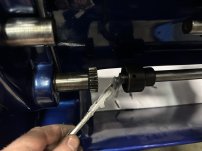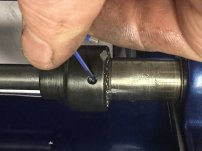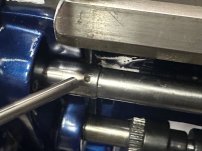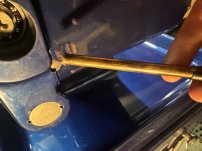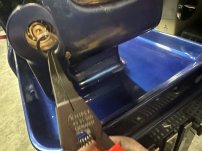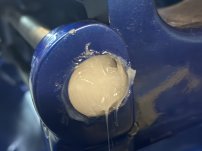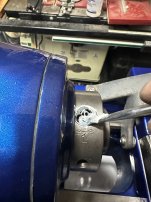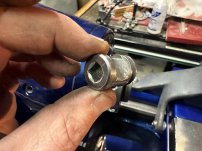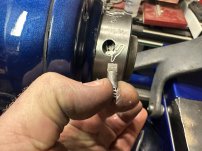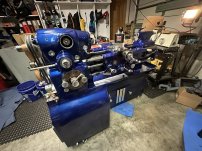Ok, its finally time to put the Spindle back in!
View attachment 417602
The threads for the spindle are 60MM with a thread of 18TPI. Nothing like a combo on English and metric to make things interesting, but this is indeed the standard for a N-12 bearing nut.
View attachment 417603
Old nut on the left. New o the right. Even tho its an odd ball metric / English thread combo its a standard off the shelf part at McMaster. My old nut doesn't want to thread on smoothly and neither does the new one. I need to chase the threads. They actually sell a
dedicated die for chasing bearing nuts in each size.
It's only $370. thats way too rich for my blood for a one of use.
View attachment 417604
So I coated the spindle threads with Dykem.
View attachment 417605
I then picked up a universal thread chaser on Amazon for $40 Lots of options and they clearly are all the same import item, so I ordered the cheapest ones. It was actually better built than I expected and came with a full set of chasing dies for English and metric. So I installed the 18TPI die.
View attachment 417606
I found the easiest way to use it, is align the teeth of the die to the threads in the middle of the threaded section, then run it forward / reverse chasing all of the threads. After each pass give it a ⅛ turn of the handle to tighten it against the threads to take another pass.
View attachment 417607
5 passes latter, all of the dyekem has been removed and I have clean threads!
View attachment 417608
The new bearing nut easily goes on by hand now.
View attachment 417609I then placed both of the bearing spacers and the rear bearing retainer into the ultrasonic, spindle nose side down and let it do its job. We want everything as clean as possible.
View attachment 417610
While those parts were washing, I moved on with modify the bearing nut to lock in place. First I placed into in the mill vise and used a square to align it vertically.
View attachment 417611I used an edge finder to find the center of the flat section. I then spot drilled it.
